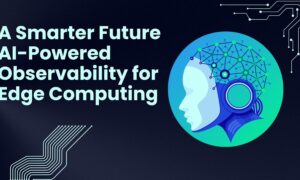As the world increasingly relies on digital infrastructure, edge computing is emerging as a revolutionary advancement in cloud systems. Sai Srujan Siripuram, an expert in distributed systems, explores the innovations and benefits of edge computing, emphasizing its transformative role in handling real-time data for IoT and other applications. By bringing computational resources closer to data sources, edge computing significantly enhances processing speed, reduces latency, and optimizes bandwidth usage. This article highlights the key advancements, challenges, and opportunities in edge-enabled systems, illustrating their potential to reshape industries and pave the way for scalable, efficient, and secure solutions.
The Growth of Edge Computing in Modern Systems
Edge computing is addressing the limitations of traditional centralized cloud systems by bringing computational resources closer to data sources. This paradigm shift enables faster processing, lower latency, and improved efficiency. With the global edge computing market projected to grow at a compound annual growth rate (CAGR) of 17.8%, industries such as manufacturing and healthcare are leveraging edge deployments to achieve significant gains. For example, smart factories report a 40% reduction in downtime and a 35% improvement in defect detection time due to edge-enabled systems.
Solving Latency Challenges with Local Processing
Latency has long been a challenge in traditional cloud systems, with response times often ranging between 100 and 500 milliseconds—unsuitable for time-sensitive applications. Edge computing dramatically improves this, achieving latencies as low as 5–10 milliseconds by processing data locally. In applications like autonomous vehicles, these advancements reduce critical response times by up to 85%, enhancing both safety and performance.
Enhancing Bandwidth Efficiency
The exponential growth of IoT devices has led to a surge in data traffic, straining network bandwidth. Edge computing alleviates this by processing data at the source, reducing the amount transmitted to centralized servers. Studies show that edge deployments can reduce bandwidth usage by 30–40%, with industries like healthcare saving 38% on data transmission costs for real-time patient monitoring systems.
Hybrid Architectures: The Future of Scalability
Combining the strengths of edge and cloud computing, hybrid architectures have become the gold standard for scalable systems. These architectures balance local processing at the edge with the centralized capabilities of the cloud, ensuring reliability and performance. Industries leveraging hybrid solutions report improved response times, better resource utilization, and a 65% reduction in cloud dependency.
The Role of AI in Edge Computing
Artificial intelligence (AI) is amplifying the capabilities of edge systems by enabling advanced analytics and decision-making closer to the data source. From predictive maintenance in industrial IoT to real-time fraud detection in financial systems, AI-powered edge computing is driving operational excellence. For example, edge-enabled predictive analytics has improved fault detection accuracy by 94% in manufacturing.
Overcoming Security Challenges
Security remains a critical concern for edge computing, given the distributed nature of the infrastructure. Robust frameworks incorporating zero-trust architectures, end-to-end encryption, and real-time threat detection are essential for safeguarding systems. Studies reveal that organizations implementing such measures achieve a 45% reduction in security breaches, ensuring the integrity of sensitive data across the network.
Pioneering New Applications with Edge Computing
Edge computing is revolutionizing multiple industries by enabling innovative applications. In smart cities, edge-based traffic management systems reduce congestion by 35% and improve emergency response times by 38%. In healthcare, edge-enabled imaging systems accelerate diagnostic processing by 75%, while telemedicine platforms enhance real-time consultations with an 82% reduction in communication latency, improving patient care and efficiency.
Implementation Best Practices
To maximize the benefits of edge computing, organizations must adopt best practices such as containerized microservices, adaptive resource allocation, and real-time monitoring. Hybrid cloud-edge deployments further optimize workloads, balancing efficiency and scalability. These strategies enable industries to meet the growing demands of IoT and data-intensive applications with agility.
In conclusion, Sai Srujan Siripuram’s insights underscore the transformative impact of edge computing on modern cloud systems. By addressing latency, bandwidth, and scalability challenges, edge-enabled architectures unlock unprecedented opportunities for industries. As advancements in AI, hybrid architectures, and security frameworks continue to evolve, edge computing is poised to lead the next wave of innovation, reshaping the digital landscape and delivering sustainable growth across sectors.


































